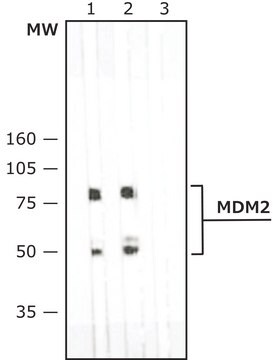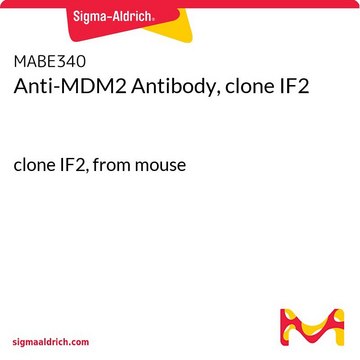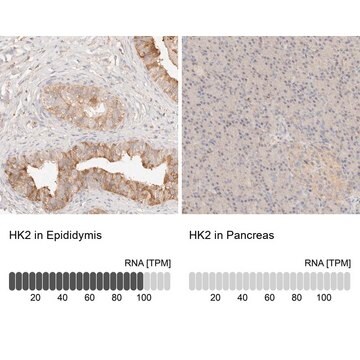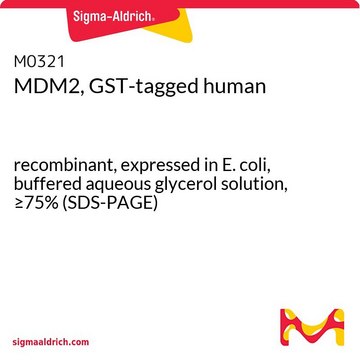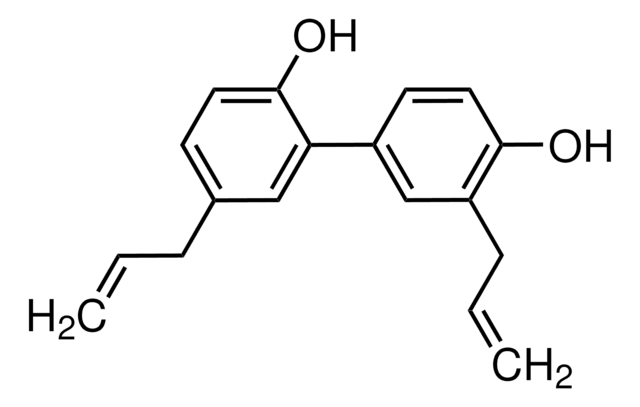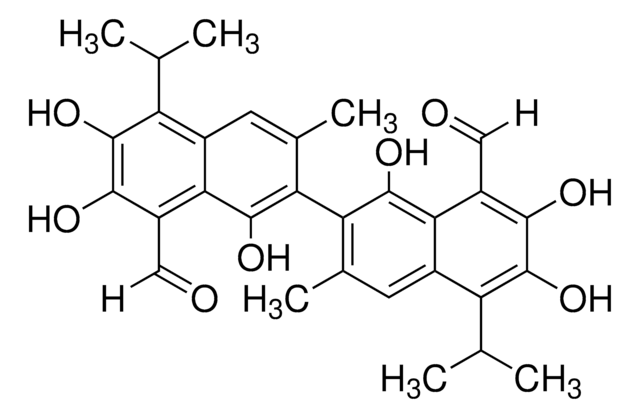M4308
Monoclonal Anti-MDM2 antibody produced in mouse
clone SMP14, ascites fluid
Sinónimos:
Anti-ACTFS, Anti-HDMX, Anti-LSKB, Anti-hdm2
About This Item
Productos recomendados
origen biológico
mouse
Nivel de calidad
conjugado
unconjugated
forma del anticuerpo
ascites fluid
tipo de anticuerpo
primary antibodies
clon
SMP14, monoclonal
mol peso
antigen ~90 kDa (additional band of approx. 55 kDa)
contiene
15 mM sodium azide
reactividad de especies
human, rat, mouse (weak)
técnicas
immunocytochemistry: suitable
immunohistochemistry (formalin-fixed, paraffin-embedded sections): suitable
immunohistochemistry (frozen sections): suitable
immunoprecipitation (IP): suitable
indirect ELISA: suitable
microarray: suitable
western blot: 1:1,000 using a whole extract of transfected 293T (human embryonal kidney) cells expressing human MDM2
isotipo
IgG1
Nº de acceso UniProt
Condiciones de envío
dry ice
temp. de almacenamiento
−20°C
modificación del objetivo postraduccional
unmodified
Información sobre el gen
human ... MDM2(4193)
mouse ... Mdm2(17246)
rat ... Mdm2(246362)
¿Está buscando productos similares? Visita Guía de comparación de productos
Descripción general
Especificidad
Inmunógeno
Aplicación
- immunoblotting
- immunoprecipitation (1 μg/ml)
- fluorescence-activated cell sorting (FACS)
- immunofluorescence (1:200)
- immunohistochemistry
- confocal immunofluorescence
- immunocytochemistry
- enzyme-linked immunosorbent assay (ELISA)
Acciones bioquímicas o fisiológicas
Forma física
Almacenamiento y estabilidad
Cláusula de descargo de responsabilidad
¿No encuentra el producto adecuado?
Pruebe nuestro Herramienta de selección de productos.
Opcional
Código de clase de almacenamiento
10 - Combustible liquids
Clase de riesgo para el agua (WGK)
nwg
Punto de inflamabilidad (°F)
Not applicable
Punto de inflamabilidad (°C)
Not applicable
Elija entre una de las versiones más recientes:
¿Ya tiene este producto?
Encuentre la documentación para los productos que ha comprado recientemente en la Biblioteca de documentos.
Los clientes también vieron
Nuestro equipo de científicos tiene experiencia en todas las áreas de investigación: Ciencias de la vida, Ciencia de los materiales, Síntesis química, Cromatografía, Analítica y muchas otras.
Póngase en contacto con el Servicio técnico


